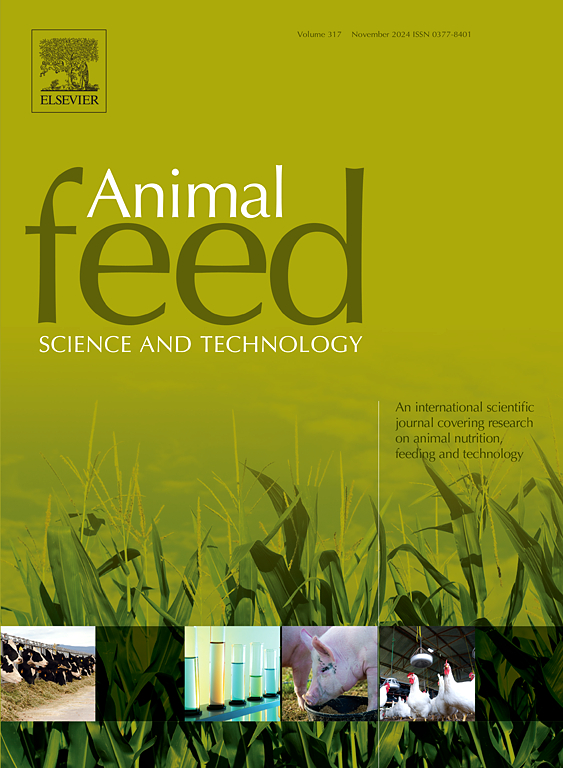Effects of dietary iron concentrations on growth performance, ascites incidence, blood biochemical parameters, and antioxidant status of broiler chickens in ascites inducing condition
IF 2.5
2区 农林科学
Q1 AGRICULTURE, DAIRY & ANIMAL SCIENCE
引用次数: 0
Abstract
The aim of this study was to investigate the impact of dietary iron (Fe) concentrations on ascites incidence in broiler chickens. Four hundred and fifty male broilers were randomly assigned to three dietary treatments each with 10 replicates of 15 birds. The treatments were dietary iron supplementation levels of 20 (control), 50, and 80 mg Fe/kg. The experimental diets were fed to the broilers after 14 d of age under ascites inducing condition. Feed intake (FI) and body weight gain (BWG) were measured biweekly and ascites mortality was recorded daily during the experiment (14–39 d). Dietary iron addition increased BWG (P < 0.05), however, FI and feed conversion ratio (FCR) were not significantly affected. Ascites mortality increased by increasing Fe supplementation (P < 0.05). Carcass (P < 0.10), breast (P < 0.05), and liver (P < 0.05) percentages increased with Fe supplementation, however, Fe supplementation decreased thigh (P < 0.10) and abdominal fat (P < 0.10) percentages. Serum total iron (P < 0.05), glucose (P < 0.05), albumin (P < 0.05), and uric acid (P < 0.05) were significantly affected by dietary Fe concentrations. Although iron supplementation had not significant effect on thyroxine (T4) and thyrotropin (TSH), it increased plasma triiodothyronine (T3) and T3/T4 ratio (P < 0.05). Serum malondialdehyde (MDA) and liver iron concentrations increased linearly (P < 0.05) by increasing dietary Fe concentrations. Iron supplementation increased red blood cell (RBC) count (P < 0.05), however, hematocrit (HCT) and hemoglobin (Hb) were not affected by the dietary treatments. In conclusion, the results indicate that higher levels of dietary iron supplementation (50 and 80 mg Fe/kg) is associated with oxidative stress and ascites susceptibility in broiler chickens. Therefore, iron supplementation level of 20 mg Fe/kg is optimum for broiler chickens in ascites inducing condition.
求助全文
约1分钟内获得全文
求助全文
来源期刊

Animal Feed Science and Technology
农林科学-奶制品与动物科学
CiteScore
6.00
自引率
6.20%
发文量
266
审稿时长
3 months
期刊介绍:
Animal Feed Science and Technology is a unique journal publishing scientific papers of international interest focusing on animal feeds and their feeding.
Papers describing research on feed for ruminants and non-ruminants, including poultry, horses, companion animals and aquatic animals, are welcome.
The journal covers the following areas:
Nutritive value of feeds (e.g., assessment, improvement)
Methods of conserving and processing feeds that affect their nutritional value
Agronomic and climatic factors influencing the nutritive value of feeds
Utilization of feeds and the improvement of such
Metabolic, production, reproduction and health responses, as well as potential environmental impacts, of diet inputs and feed technologies (e.g., feeds, feed additives, feed components, mycotoxins)
Mathematical models relating directly to animal-feed interactions
Analytical and experimental methods for feed evaluation
Environmental impacts of feed technologies in animal production.
 求助内容:
求助内容: 应助结果提醒方式:
应助结果提醒方式:


